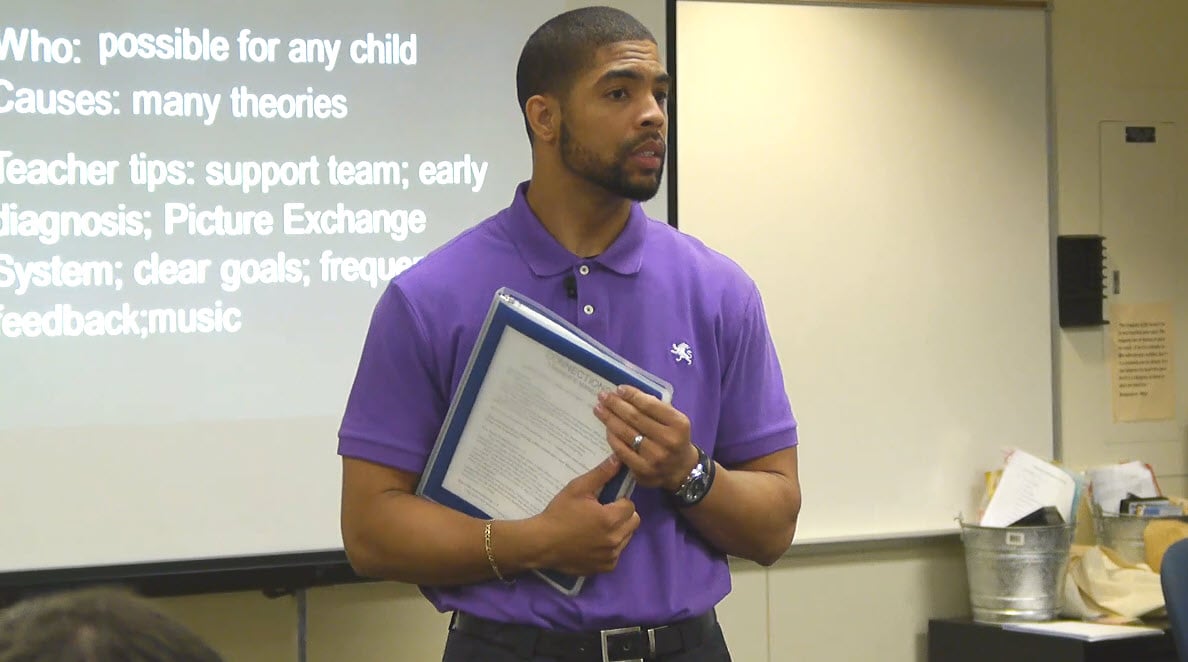



Whether you’re beginning or about to finish your training, your end goal is to land a job as a special education teacher.
It’s always best to prepare ahead and know what to expect when you begin your job hunt, and that includes prepping the materials you’ll need when applying and interviewing for a teaching position. These materials include a special education teacher resume, a teacher cover letter, any certifications you hold and a portfolio.
When gathering these materials, it’s important to focus on what a school principal is looking for when filling an open teaching position. Because special education is a specialized field, your materials should include relevant information that shares why you’re the ideal candidate for the job.
One of the best ways to accomplish this is by tailoring your resume to a job description. This is common advice across several industries. Hiring managers want to see if you have the skills and experience needed to do a job well. By understanding what a principal is looking for in a special education teacher, you can better put your best foot forward and make a great first impression.
While each job description will vary based on the needs of the school district, below we’ll explore the type of special education teacher job description you may see when searching for jobs, as well as other information that will help you tailor your job application materials so that you can land the teaching job of your dreams.
A special education teacher's job description often revolves around the duties of this type of educator. 
What is a special education teacher? Special education teachers work with students who have a variety of disabilities. They typically work with and instruct kids in grades preschool through 12th who have mental, learning, emotional or physical challenges.
Special education teachers may adapt general education lessons and teach various subjects to students who have mild to moderate disabilities. Teachers who work with students who have severe disabilities may teach basic skills.
When searching for a special education teacher job opening, you’ll likely see job descriptions that take into account the above definitions. For example, here is a special education teacher job description you may see:
Provide special education students with experiences that help propel their academic, emotional, physical and social growth. Adapt general education curriculum and prepare lessons that are tailored toward students’ ability levels. Develop and update IEPs, and utilize progress monitoring tools to provide this specially-designed instruction.
While some job descriptions may be more general in nature, others may be more specific, including position details such as:
When pulling together your job application materials, such as your resume, it’s important to focus on a job description and match your experience with what the school district is seeking in a special education teacher.
But what if you’re working ahead and aren’t ready to seek out specific job listings yet? Or what if you find a job listing you’re interested in, but it’s vague when it comes to requirements or position details?
In the next section, we’ll dive further into the responsibilities of a special education teacher so that you can begin crafting an attention-catching resume.
Every special education teacher's job description will be different. Some will be detailed, while others will be vague. 
If you’re struggling with knowing what to focus on in your resume, it can help to better understand what the overall responsibilities of a special education teacher are since nearly every open position could benefit from someone who has this type of experience.
Understanding these responsibilities may better help you when searching for the type of special education job you want as well. For example, the Individuals with Disabilities Education Act breaks disabilities into 13 categories:
If your training involves specializing in one or more of these areas above, this is something you will want to include prominently on your resume and in your cover letter … especially if you are looking for a teaching job that specifically works with special needs students who have physical disabilities or have speech and language delays, for example.
Depending on the needs of children, a special education teacher may also:
Suppose your teacher training includes experiences with any of the above responsibilities. In that case, it is important to highlight this in your resume and any other job interview prep materials you are gathering.
As we mentioned above, some districts keep their hiring ads short and sweet. They’re in need of a special education teacher. If you are and have your Texas teacher certification and possess the skills of a special education teacher, you’re invited to apply.
There are still some actions you can take to make a great first impression based on the information that is available to you. By researching the school district and specific schools where there is a job opening, you can discover information like key demographics, district-wide goals and mission statements.
Researching a school’s education philosophy or mission statement may provide clues about its approach toward teaching methods, discipline and behavior management, curriculum development and leadership.
Knowing which teaching methods, programs and technology a school district uses can also help you speak to which qualifications and previous experience you have using them. For example, suppose a school promotes inclusivity among its special education student population. In that case, you can make a positive impression when responding to the job posting by sharing your work in inclusive classrooms.
Another tip is to use your teacher certification program’s resources for advice. The best teaching credential programs have an extensive network of school districts that they work with to fill open positions. The best programs also employ instructors who are former or current teachers and can provide insight into school districts in their areas.
Need more advice on how to find the right special education teacher job for you? Our article, Texas Teacher Search Tips For Landing The Best Job, offers advice on the best hiring sites to use, why job fairs are a great way to get face-to-face contact with districts, and how your network plays an important part in jumpstarting your special education career.
Micah is the Director of Curriculum & Technology. He holds a Bachelor of Arts in British Literature, from the University of North Texas and a Master of Arts in Teaching, from Louisiana College. In his previous career, Micah served for 14 years as a banker and bank manager. For the majority of this period, Micah managed the Downtown Fort Worth location of Frost Bank. In 2005, Micah finally surrendered to his true calling to be an educator. After a brief, but fulfilling term teaching high school English at Flower Mound High School in Lewisville ISD, Micah went to work for the family business, training teachers.
7166 Baker Blvd., Suite B · Richland Hills, Texas 76118
Phone 817-284-7731 | Fax 817-284-3396
Login | Make Payment | ECAP Handbook | Privacy Policy | Pricing
YOUR COMMENTS